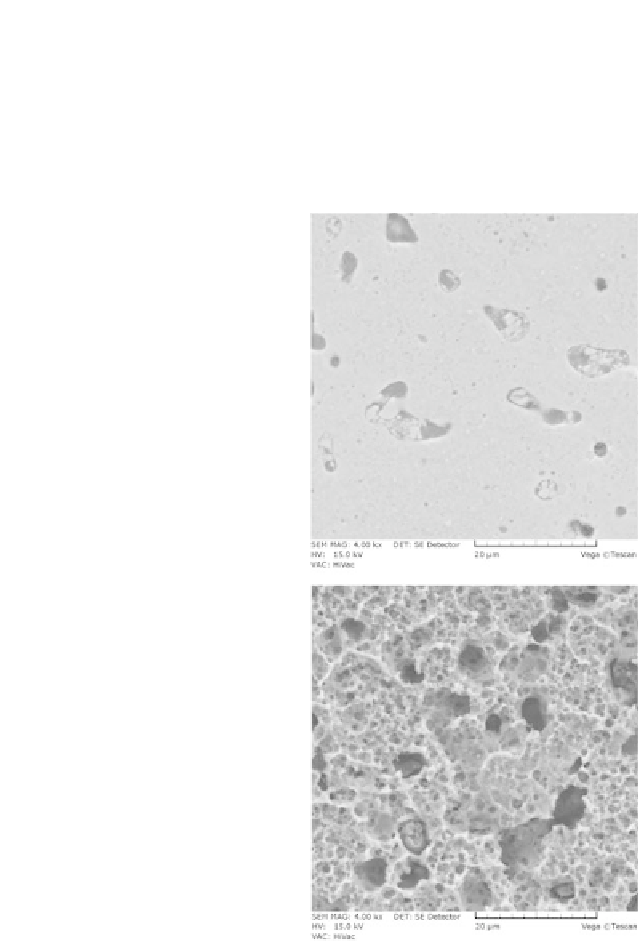Biomedical Engineering Reference
In-Depth Information
microcrystalline Ti (Fig. 9.11). On the Ti-glass nanocomposites, the
surface was etched for 15, 30, and 60 min (Fig. 9.60). The increas-
ing etching time results in fast roughening of the surface and sponge
pore formation. The pore diameter increases up to 15 μm after
60 min etching. For these different etching times, the surface is
signiicantly different.
(a)
(b)
Figure 9.59
SEM images of Ti-HA nanocomposites before (a) and after
(b) etching in 1M H
3
PO
4
+ 2% HF at 10 V for 15 min [31].
The Ti-glass nanocomposites presented in Fig. 9.60 were
investigated by EDS analysis and the results are shown on Fig. 9.61
[31]. For all cases, the surface composition is comparable. In all















